Rerurn to Romy the Cat's Site
In the Forum: Melquiades Amplifier
In the Thread: Planning my DSET
Post Subject: First music testingPosted by anthony on: 1/31/2019
So, the first DSET is still downstairs on the electronics bench and I am back to work for a while, but not too hard and not for too long (I hope). I've added all the filters and checked and tested and changed some more things and decided that it was time to see if I could get any music to play. Several crappy drivers and speakers that I had scrounged for just this purpose were wired up and I pressed the go button to stream some Tidal.
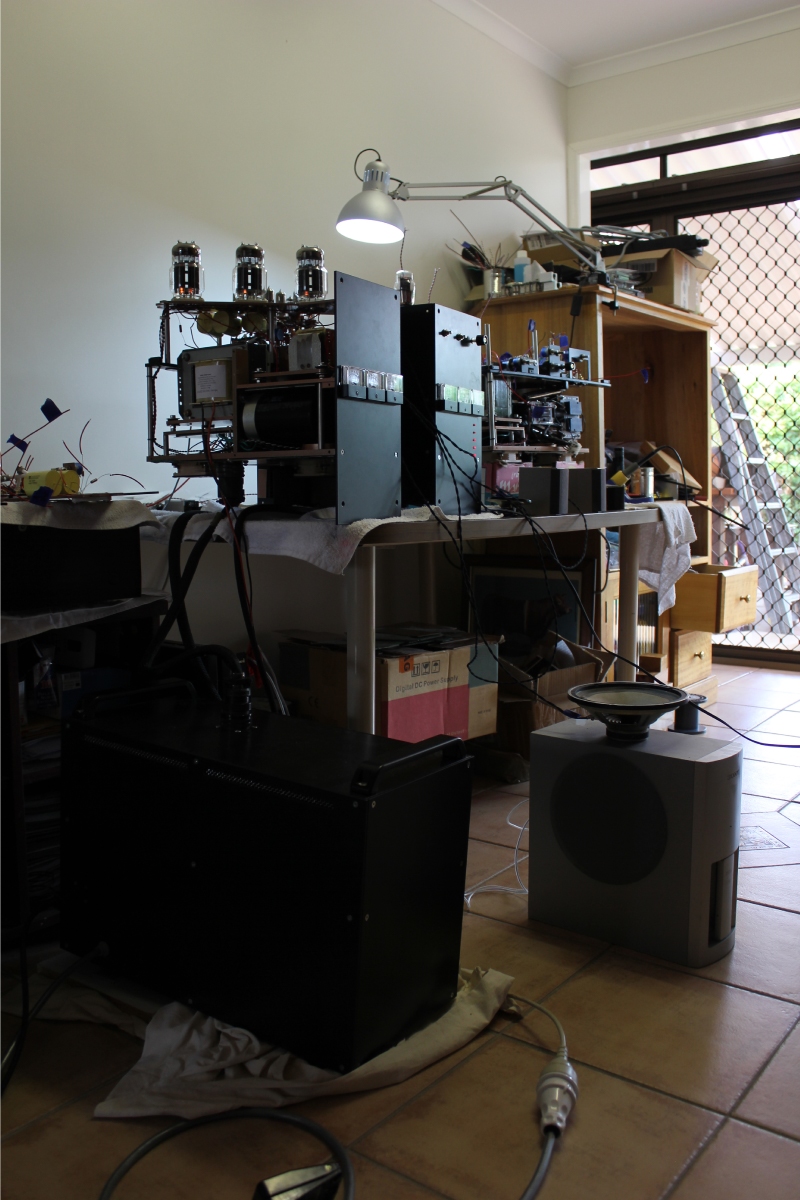
It works! I have sound. Kind of a weird sound with the mix and match driver selection but at least it is comprehensible.
This is the front of the amplifier where it wraps around the chassis pillar for the horn stack...
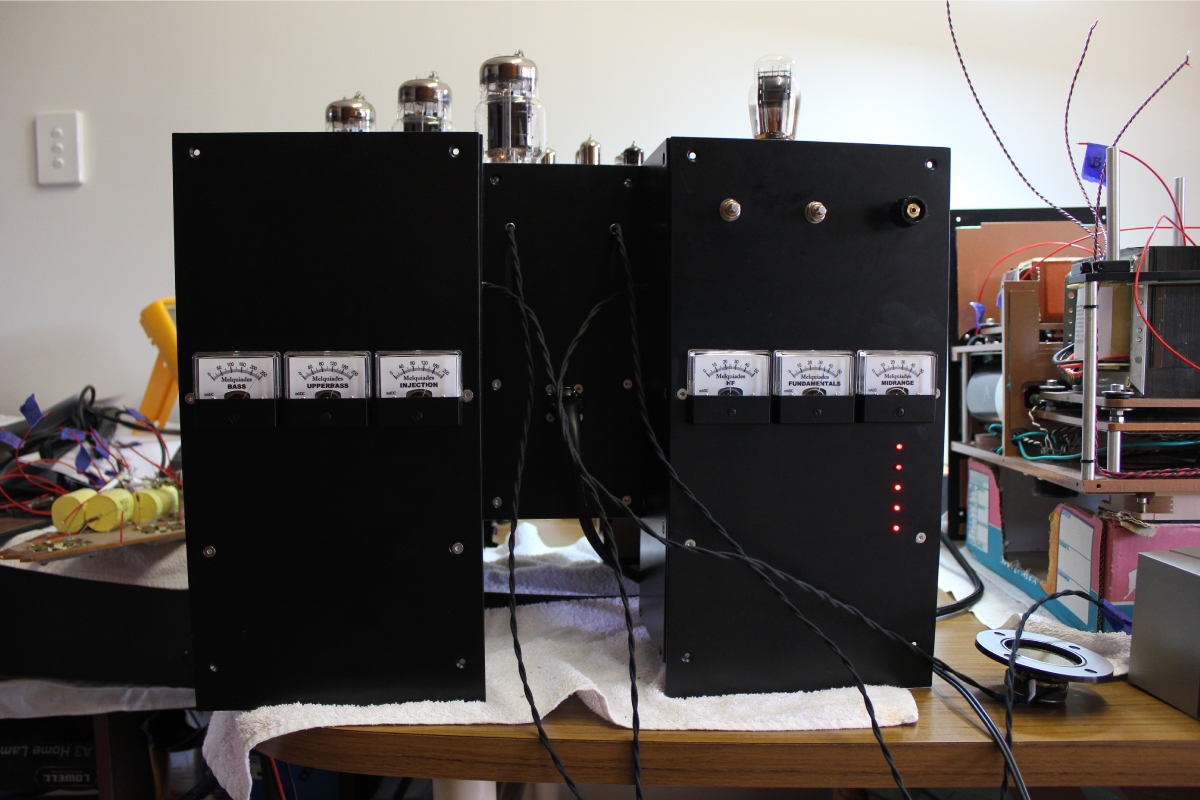
Plenty of thought has gone into the speaker cables largely because there are plenty of them and I would prefer for them to be hidden completely from view. Five of the six channels exit the amplifier in the well that fits around the horn stack pillar where they are nicely hidden, and the bass channel exits from the side closest to the Bass Cannons. I've thought about different types of speaker wire from exotic to simple and in the end I have gone with simple Duelund 16GA tinned copper wire. I've used this before with fullrange speakers and it is fine. The big benefit for me is that it is black and the individual wires are tinned: black to hide it and the tinning because these speaker wires will not be terminated in any way, no spades, bananas or whatever, just crushed in the binding posts of the driver one end and directly soldered to the output transformer on the other end. Inductance and capacitance should not be an issue for such band limited amplifier channels, and even the Injection Channel that runs fullrange will run 14dB or so down. Terminations seem to be the major issue in speaker cables, and these Duelund wires when used this way will eliminate a joint/termination each side of each binding post while proving resilient to oxidation in a tight crush joint at the transducer.
As discussed earlier I have gone for ammeters instead of voltmeters. I can hit the mA target on all but one channel (F), but with exception of E (DHT Channel) they sure do wander about a bit, particularly the 6C33C channels. Romy, is this normal? I set them at about 240mA/150mA/150mA and they will go down over time and then they will come back up and past their original settings then they may wander down again. Makes setting a stable current draw like herding cats.
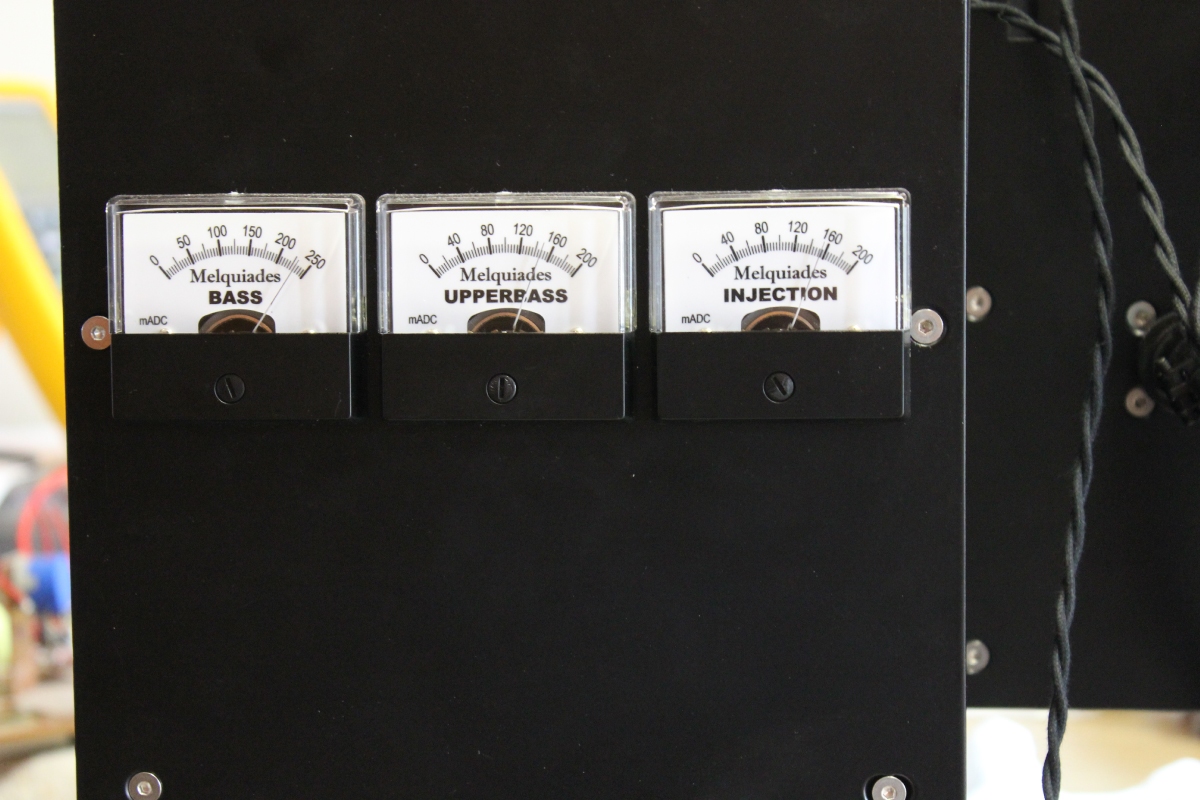
Here is Channel F. It won't come over about 20-25mA. Plus the DC Offset won't trim out less than about 0.27V (yes volts). I have a feeling that the two problems are linked and will check to see where I have wired up the input filters for each channel.
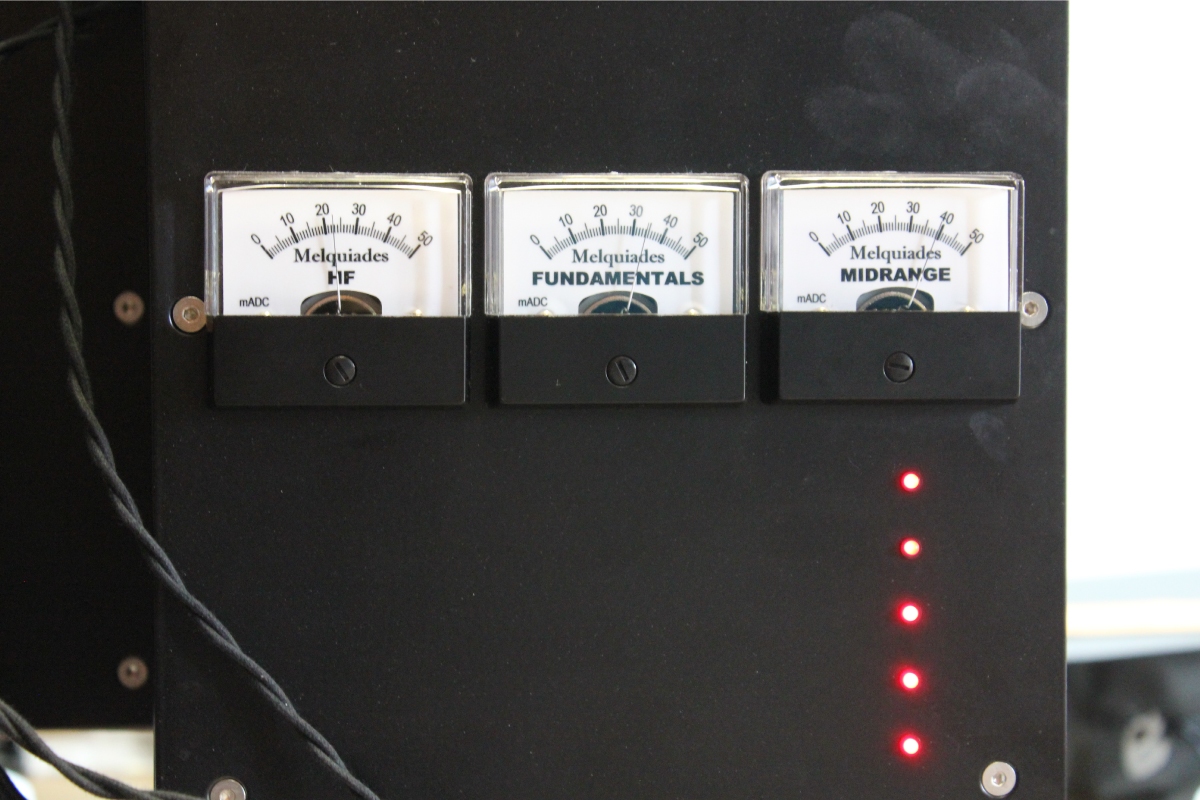
Anyway, music has been playing downstairs for a couple of hours now and the only temperatures that I am concerned about are the 3 final anode resistors (15k 12W) for the first stages of A/B/C. The hottest of those according to my thermal camera is about 140C (280F) so it might pay in the long run to parallel a pair of 30k 12W resistors even though the datasheet specifies 350C maximum and there should be decent airflow from the chassis fans at that part of the case.
The next DSET is also taking shape...
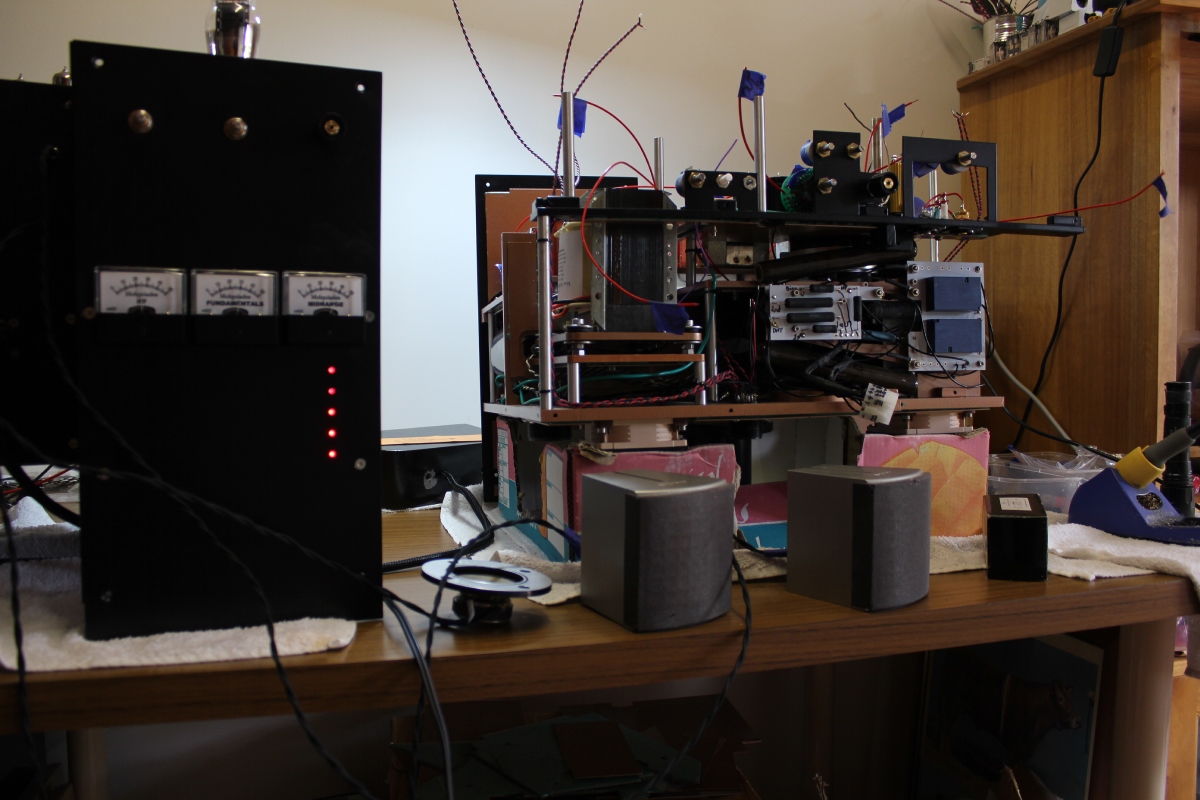
Getting closer!
Rerurn to Romy the Cat's Site